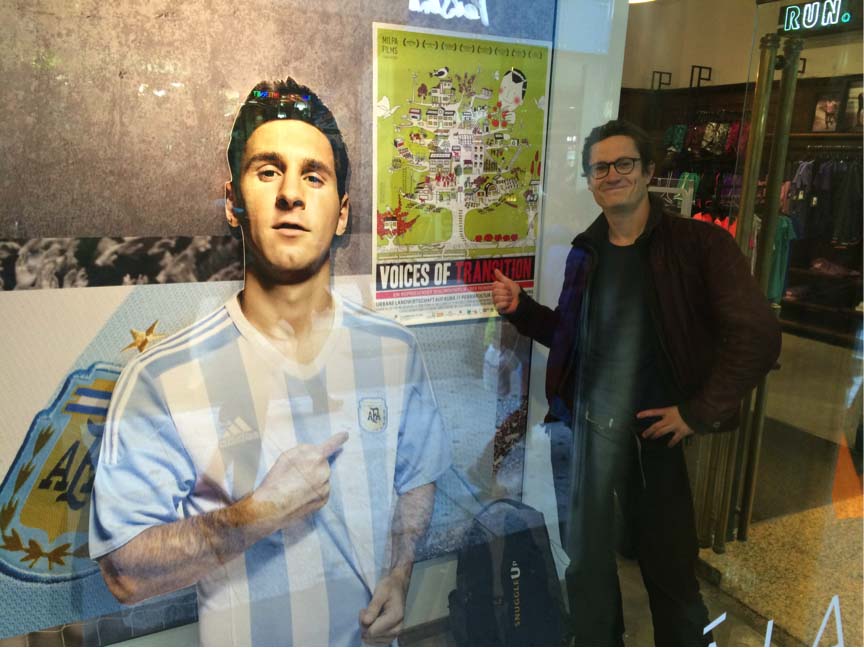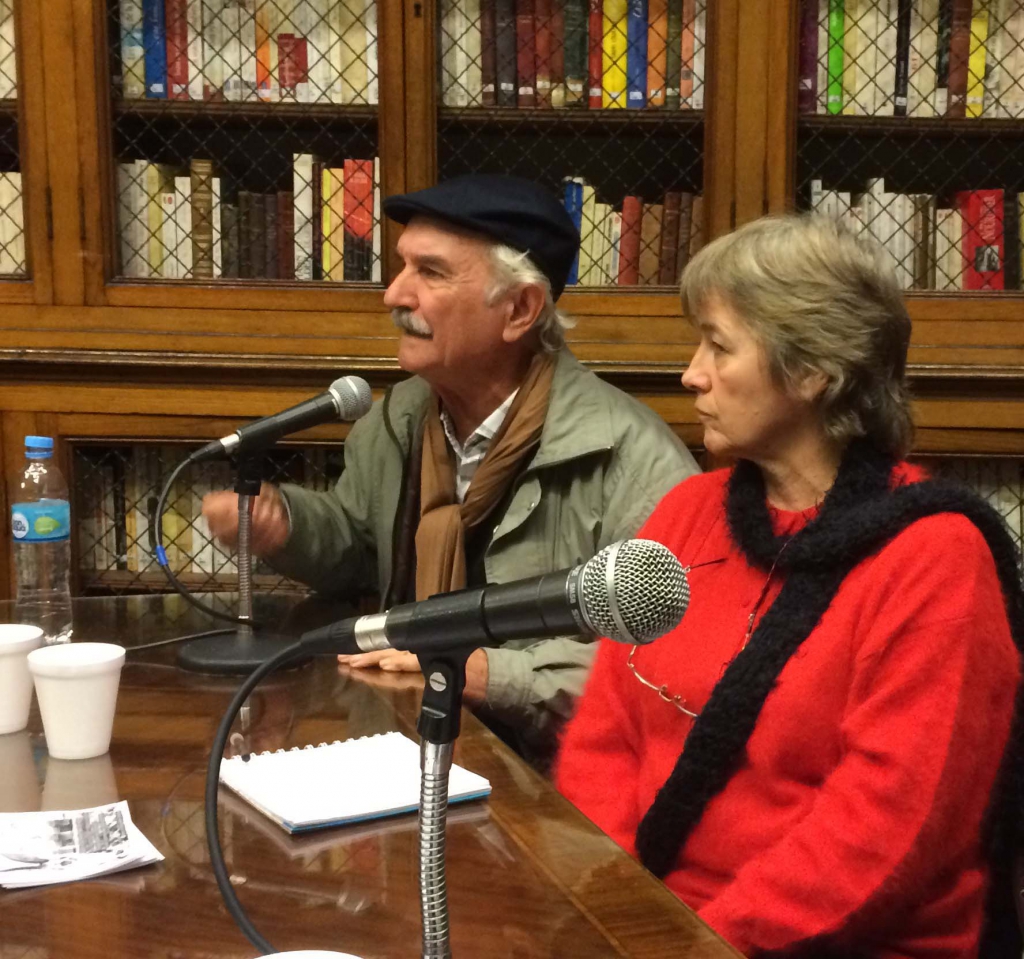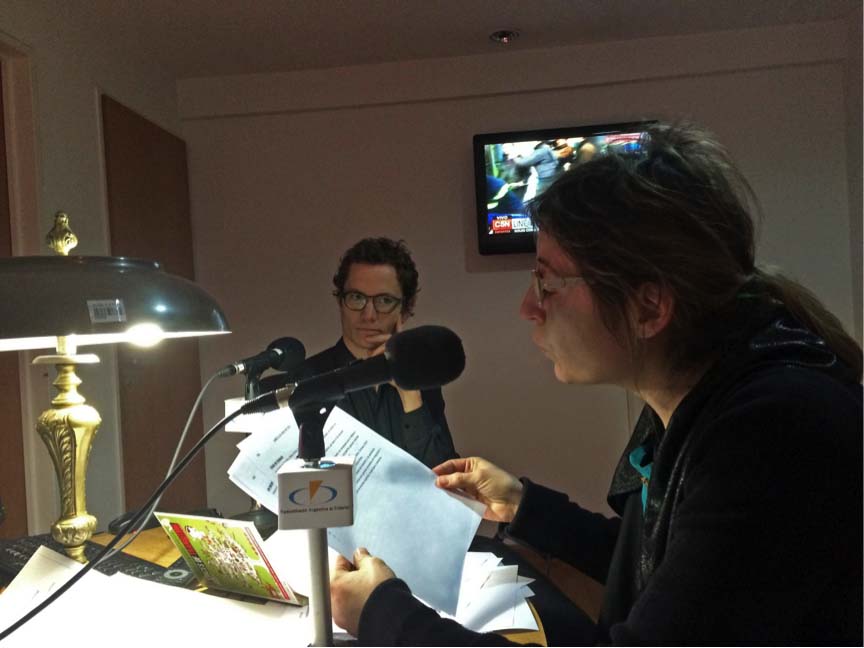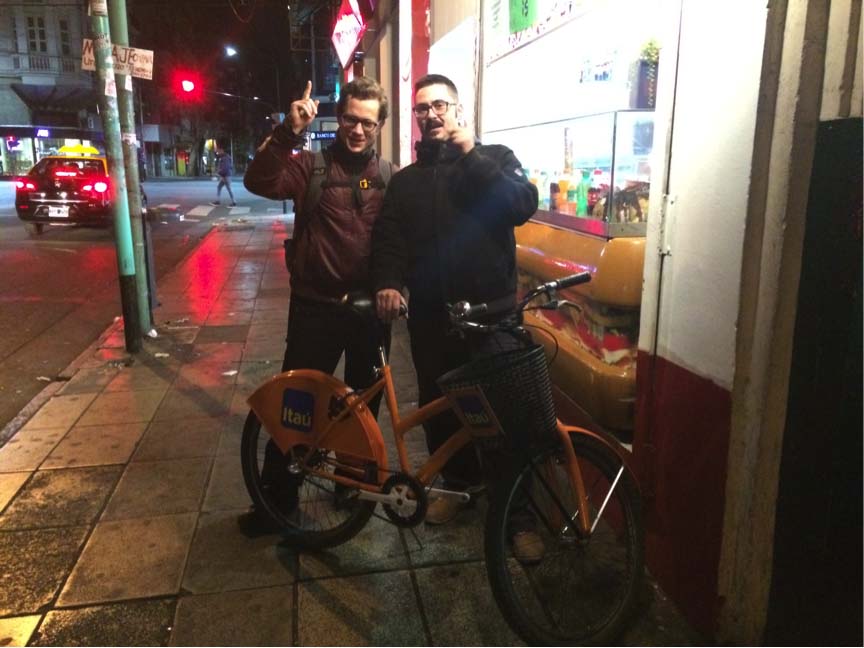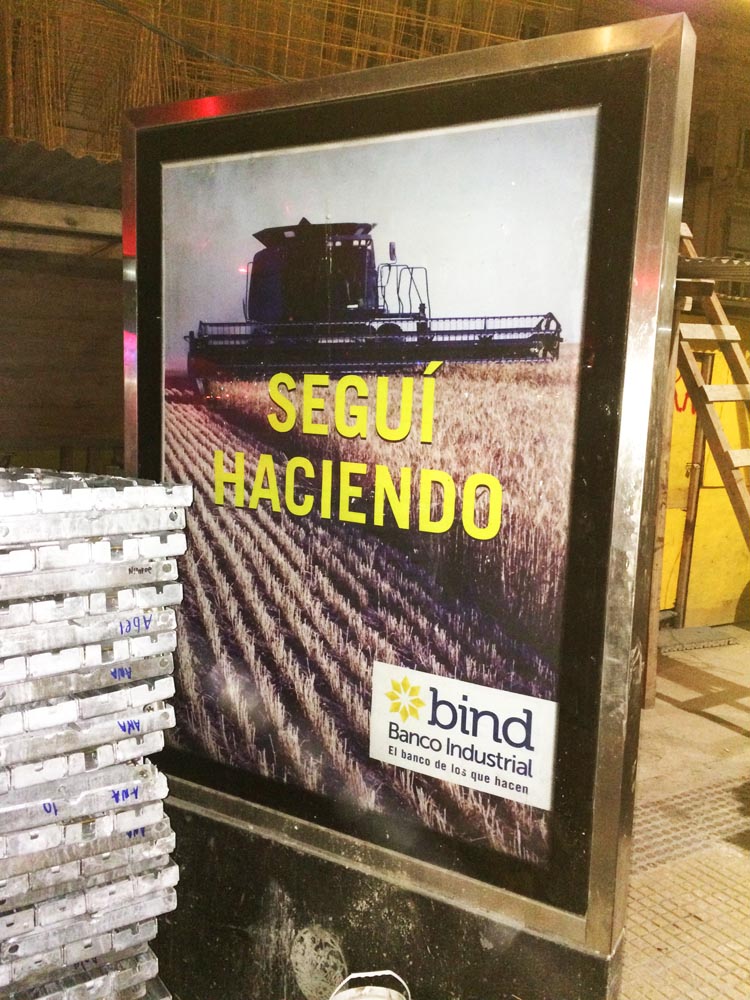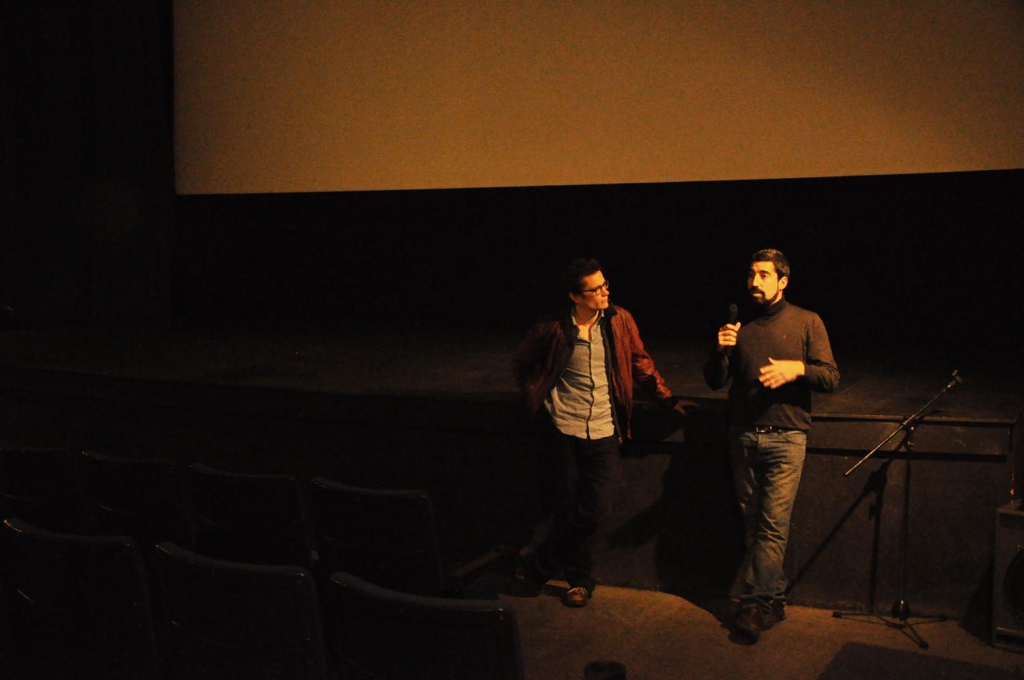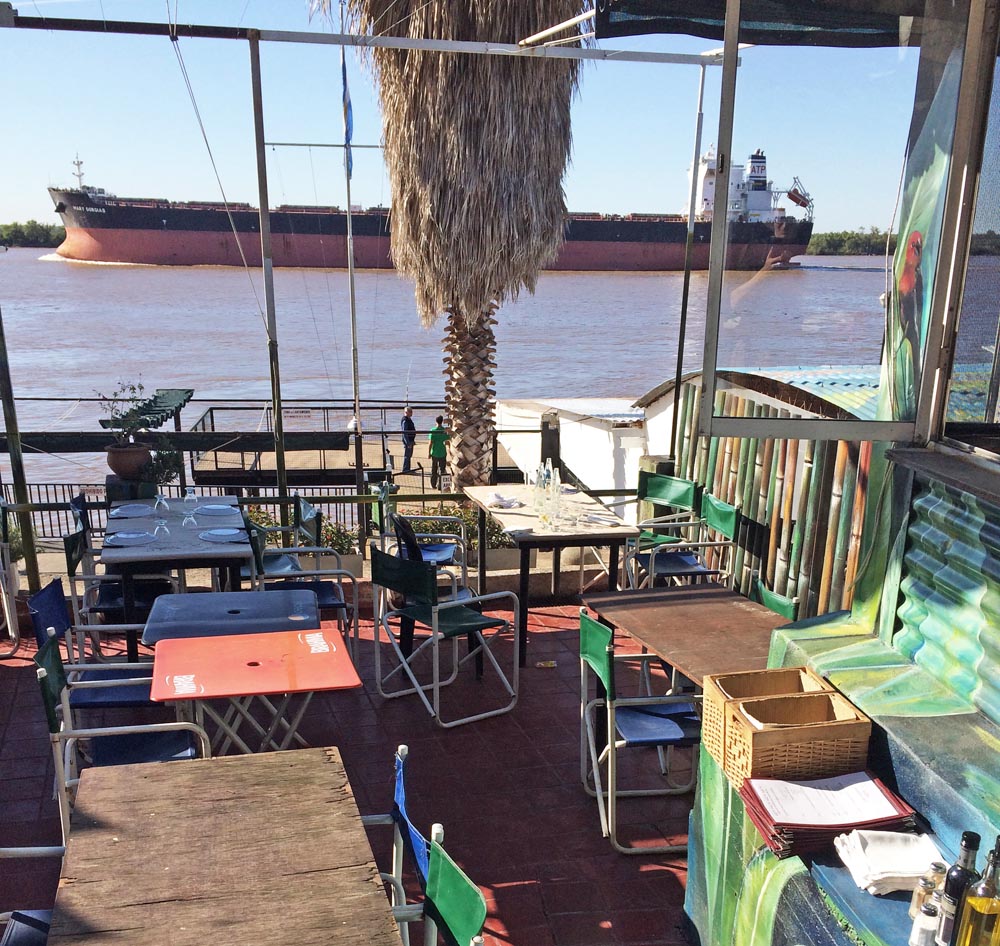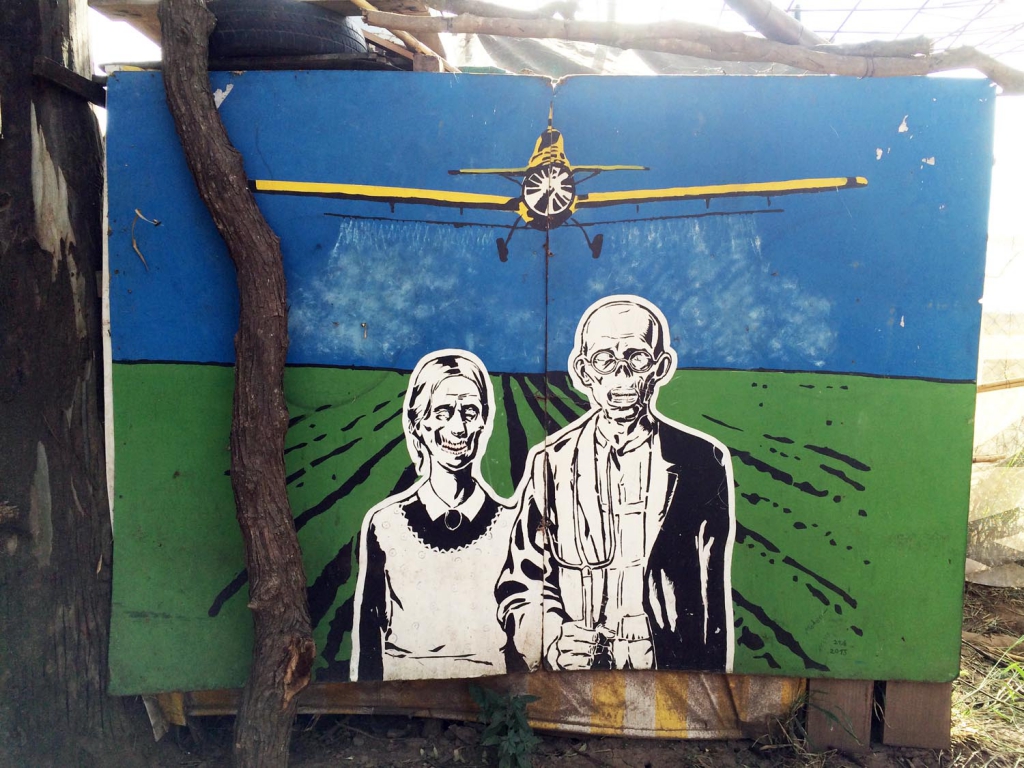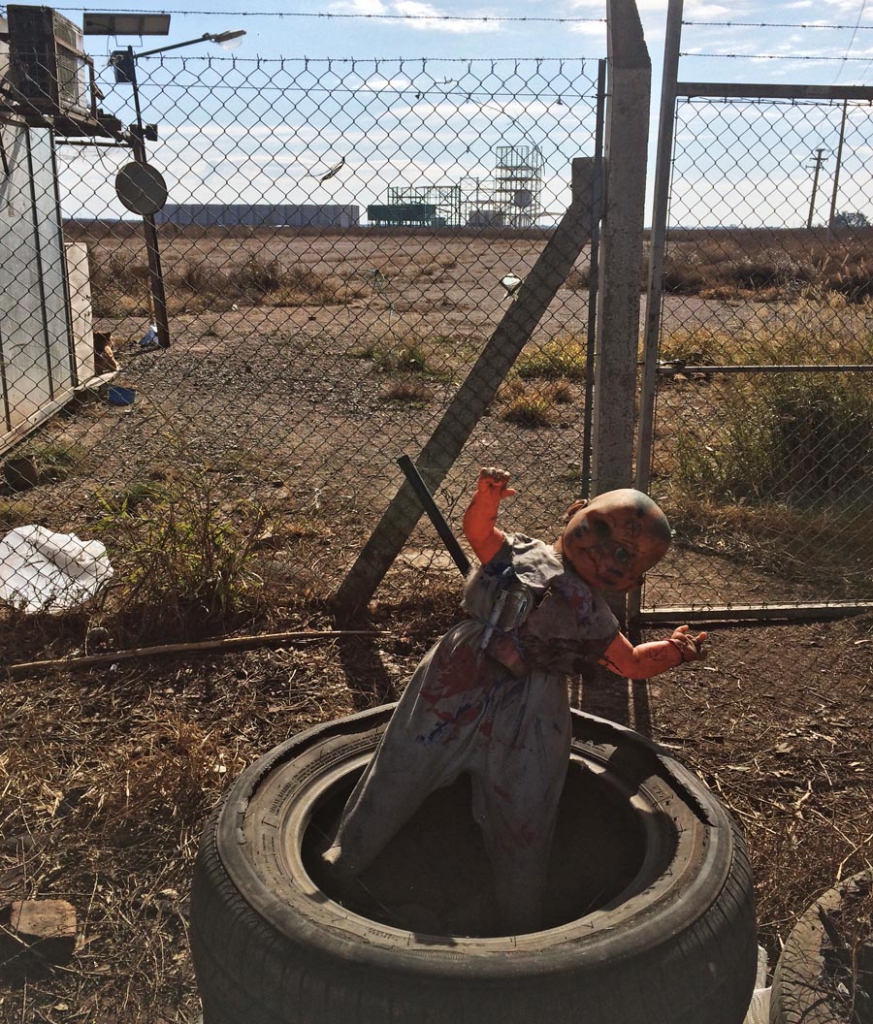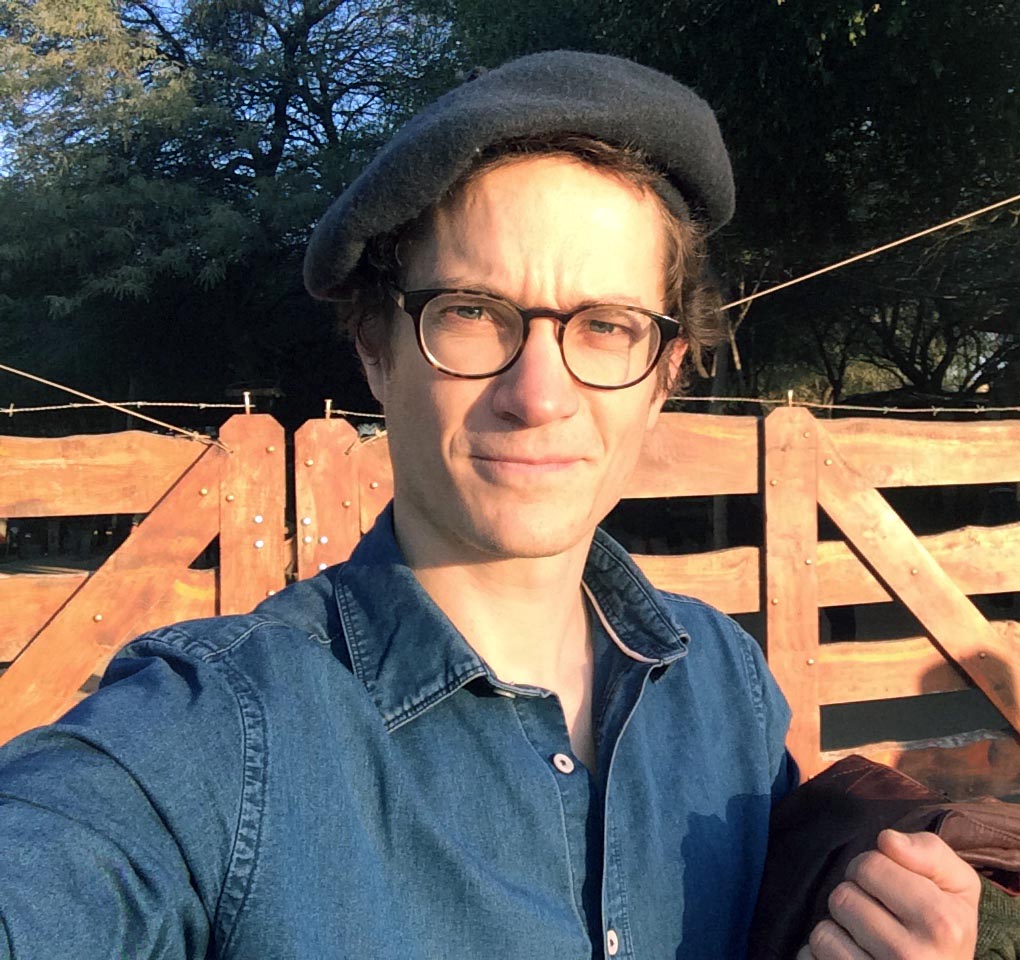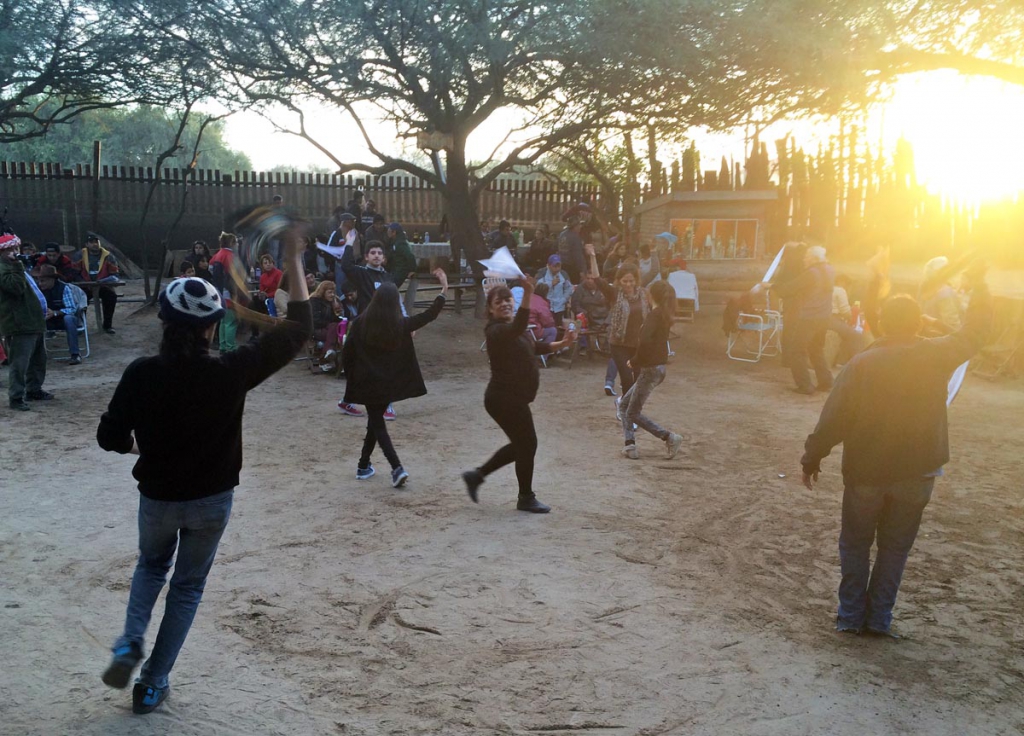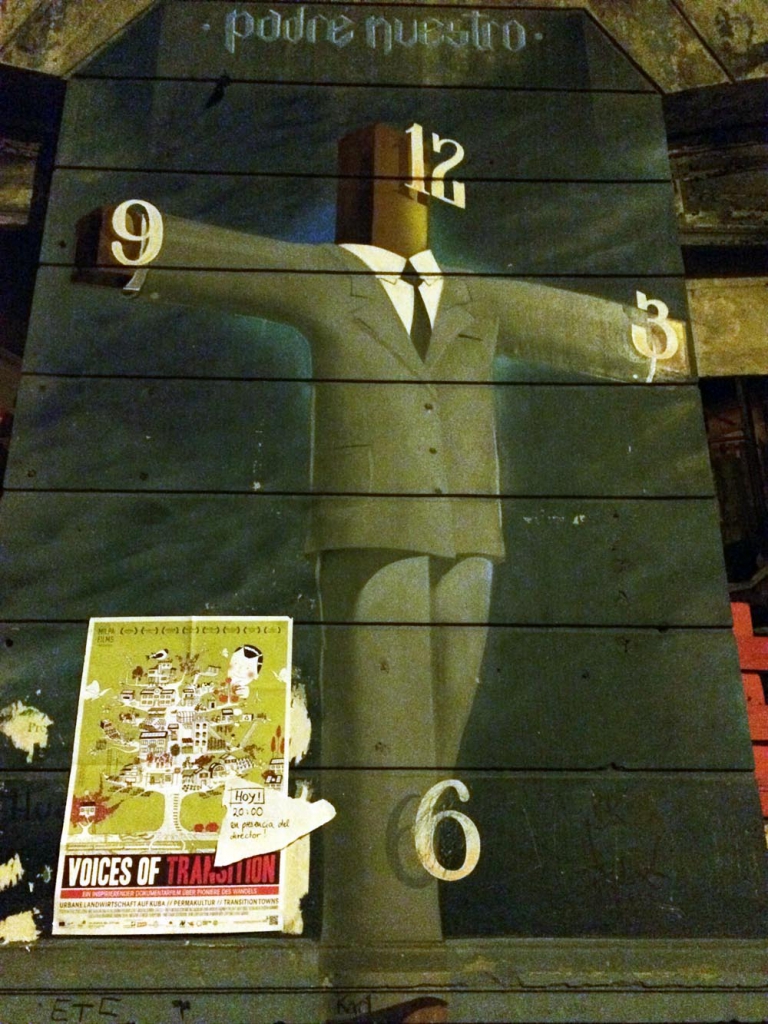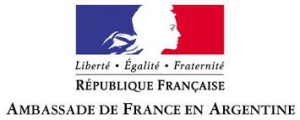In early may, a sudden burst of joy: “Voices of Transition” and I (Nils) got invited to the international Human Rights Film Festival in Buenos Aires! Time for a premiere!
But should I accept the invitation and fly back and forth, how would I justify all the CO2 pollution?
In the end, what could have been a sheer nonsensical festival participation, turned into a full-blown film tour, with 11 free public screenings, organized by farmers associations, students, scientists, permacultivists and anti-glyphosate activists.
I decided to offer the public screening rights to this country, for an undefined time, herewith acknowledging the important role of my Argentinian friends in teaching me how to fight for more autonomous lifestyles. In the Andes mountains they were the Quechua and Aymara people; in Buenos Aires, the anarchist communities like the “Centro Cultural La Sala” and the numerous MTD’s I had visited; and lastly in Patagonia, the permaculture activists from El Bolsón. Thank you, my friends!
(read the full story below!)

The premiere screening of „Voices of Transition“ in the Argentinian capital happened in the crammed library of the “Alliance Française”.
Witnessing the testimonial of Diego and Irmina after the premiere screening was very moving: Back in the 70s, this couple was persecuted by the dictatorial regime as “terrorists” because they believed in a world without repression and wouldn’t shut their mouth. Today, for a change, they are being seen as public enemies by the neoliberal elites and by the industrial farming lobbies as they believe in living soils and in the harmonious coevolution of all living beings. The world is still upside-down…
I had the high privilege to attend the movie premiere of “Los del Suelo” in their presence, telling the story of how the young couple hid away from the paramilitary in the 70s, adopting indigenous hunting and gathering methods to survive in the woods during almost three years.
Premiere day of “Voces de la transición”. In just 90 minutes, we squeezed in…
– 2x live interviews on the National Radio (German and French speaking channel),
– 1x filmed interview by the Festival (in Spanish) and
– 1x Q&A with the public (in English and Spanish).
Oh yes, did I feel important on that day ;)
My favourite film on the festival was “On the bride’s side” (“Io sto con la spossa”), by Antonio Augugliaro. Featuring the greatest trick ever to get over European borders without problems: just dress up as a wedding team!
The exports of genetically modified soy beans today represent approx. 30 percent of the country’s total sales abroad. The trend seems unstoppable: the latest breeds are now allowing the monoculture soy model to sprawl further down into the colder South, and even into Patagonia.
The photo reads: “continue doing it” (ad from an Argentinian bank)
Santa Rosa: Alejandro and Loli, a couple of professors (history and social sciences, Universidad de la Pampa) invited me to present my film at the movie theater “Amadeus”. Both moved to Santa Rosa recently and used the “Plan Procrear” program to build a house, thinking that here they finally would be safe from the toxic herbicide Glyphosate… Very unfortunately, now they know that their kids might soon be in the reach of the so called “moskito” planes which spray glyphosate death zones, with the “soy frontier” rapidly moving south.
The screening of “Voices of Transition” in the sold-out cinema would be the opportunity for them to launch a transition initiative in their neighbourhood.
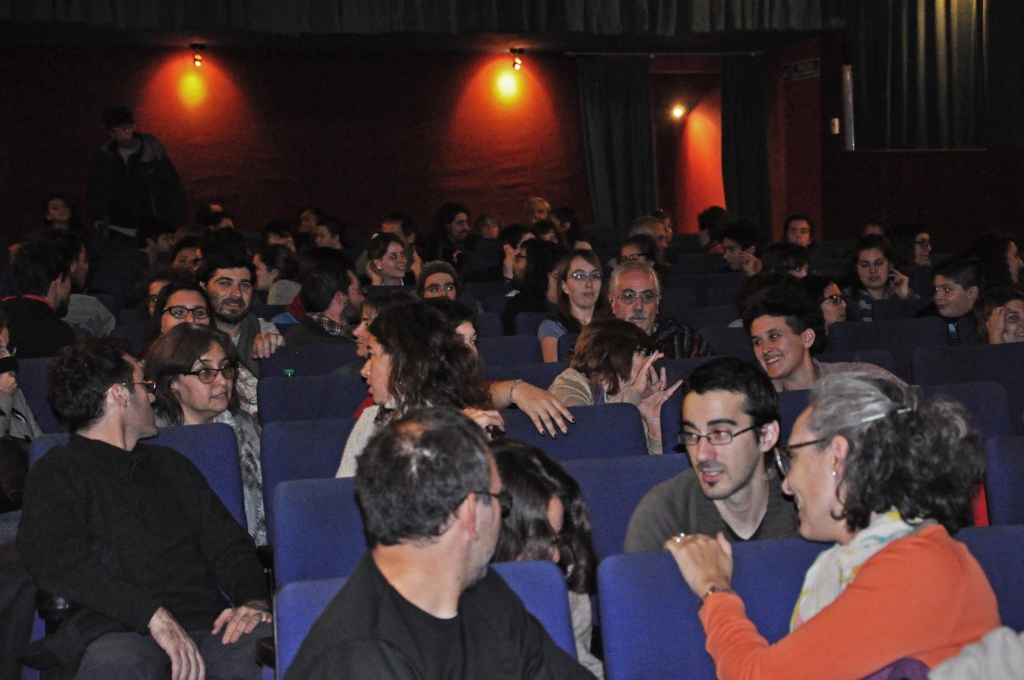
intense chatting with the “unknown neighbour” in the theater
I love this! 120 people conversing with their “unknown neigbours” (paradigm of the modern world) for 3 minutes, about why they attended the screening tonight. Playing this sort of game is crucial for a fruitful screening, as it actually represents the very first step for successful transition initiatives to be founded…
NB: Just think of how many more sentences are exchanged than when there’s only one guy talking in front!
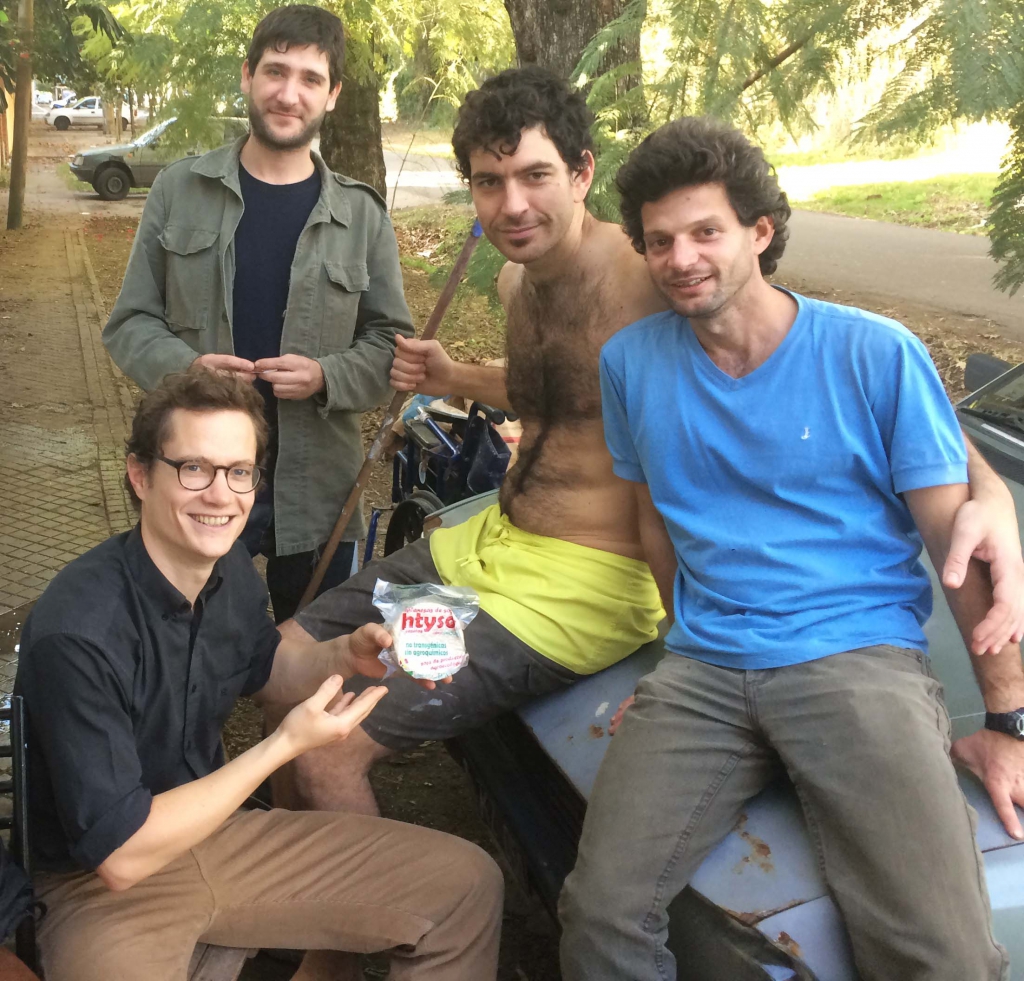
Posing with Rosarinos in their best business suits, promoting their first organic soy burger. (Alisandro, with the blue T-Shirt is teaching anthropology at University, building straw bale houses, designing permaculture gardens, and solving life riddles while drinking mate: Any problem you have, ask him!)
It’s impossible to ignore the progress of the soy invasion, and to remain unharmed. Even if you just want to peacefully enjoy a soybean free drink in a bar near the Paraná river, the soy beans will float by in the biggest bulk carriers ever invented by mankind, silently, and relentlessly. They take the road to the ports of Europe and China, where they’ll be fed to industrially-raised, non organic pigs and cattle.
The protests keep on growing. Tragically, this might also be due to the following: the more people die from Glyphosate and “Round up” (Monsanto’s toxic herbicide cocktail), the less their family members and friends have to lose when they pick the fight against the multinationals and the collaborating state.
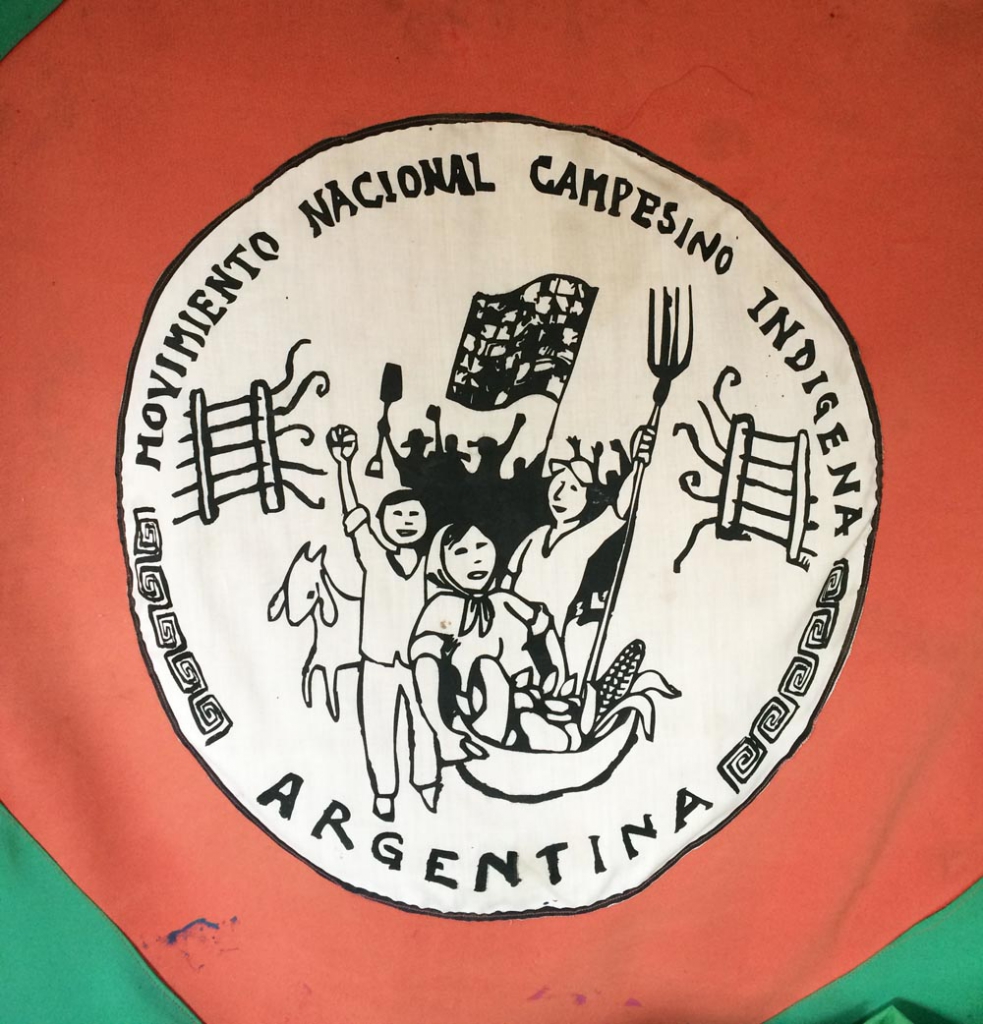
The Movimiento nacional campesino indigena is one out of numerous organisations “reclaiming the fields”.
This organisation who is some sort of a “umbrella organization” claims to unite 500.000 farmer families…
And the movement is gaining momentum, and has its first victories to celebrate. The (illegal) construction of Monsanto’s seed processing compound (background of the photo) has been stopped, proving herewith that Monsanto is not invincible. But it takes a intolerable toll: people have to give their lives in sacrifice before things start changing…
Listen to Sofía, founder of the local fight against Monsanto, sharing with us her story and the story of her children – partly killed, partly poisoned for life – around a mate. I couldn’t retain my tears during the interview.
(Interview with Sofía Gática, all in Spanish)
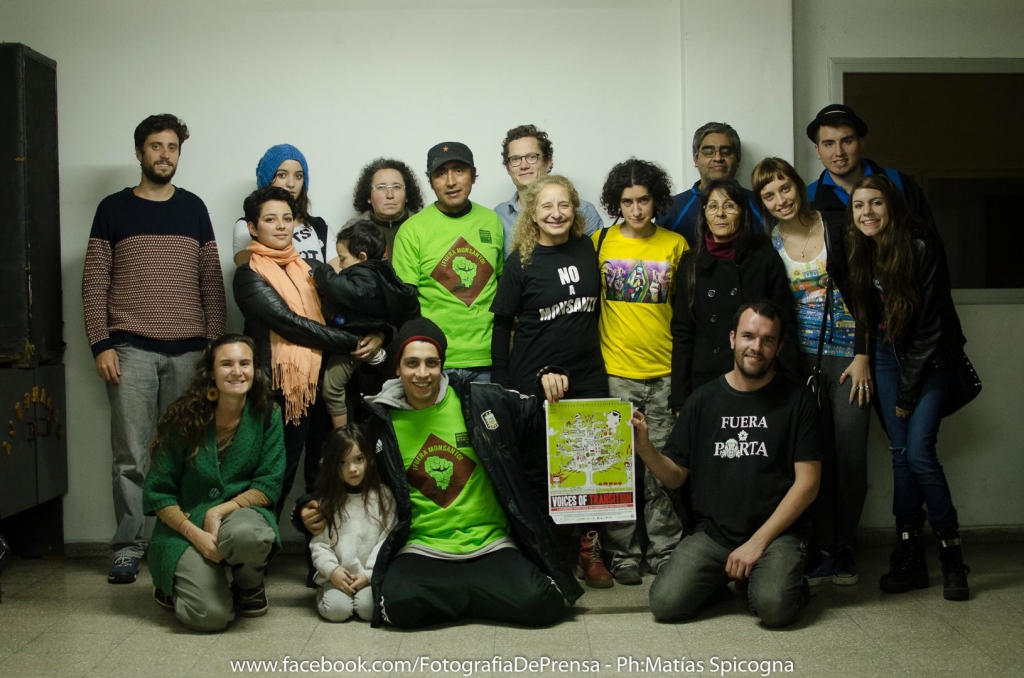
The young team of activists around Merce Cohen (yellow T-Shirt) who organized the screening in Córdoba
In Santiago del Estero, I’m offered to dress my head with a traditional “guaina” and to celebrate another good news: the province with the lowest contribution to the Argentinian GDP (which, as we all know, seems to be tightly linked to a better quality of life, intact solidarity bonds and healthy traditions) remains the unbeaten “capital de la fiesta” and the “capital del folklore argentine”! After eight consecutive screenings, it’s about time to dance those chacareras, zambas, gatos, carnavalitos, to drink wine and mate… and forget about time.
The “Patio del Indio Froilán”: where hundreds, sometimes thousands of people, old or young, from Santiago and neighbouring provinces gather each Sunday in order to get high on dancing. As opposed to most countries I’ve visited, traditional dances here still form part of all daily lives. Pachanga, Reggaeton, Salsa? Certainly not! We’re talking about Chacarera, Zamba, Gato, Escondido, Carnavalito! It’s beautiful. And handkerchiefs are finally en vogue again.
Valparaiso, on the other side of the Andes mountains. The “Sitio Eriazo” is an occupied building site. It was too dark to take a meaningful picture, but believe me it was a truly beautiful experience, because of the very special mood of this anarchic place with its numerous artistic installations, and last but not least because of the rare privilege for being served a delicious, freshly made pizza directly from the clay oven in the middle of the screening.
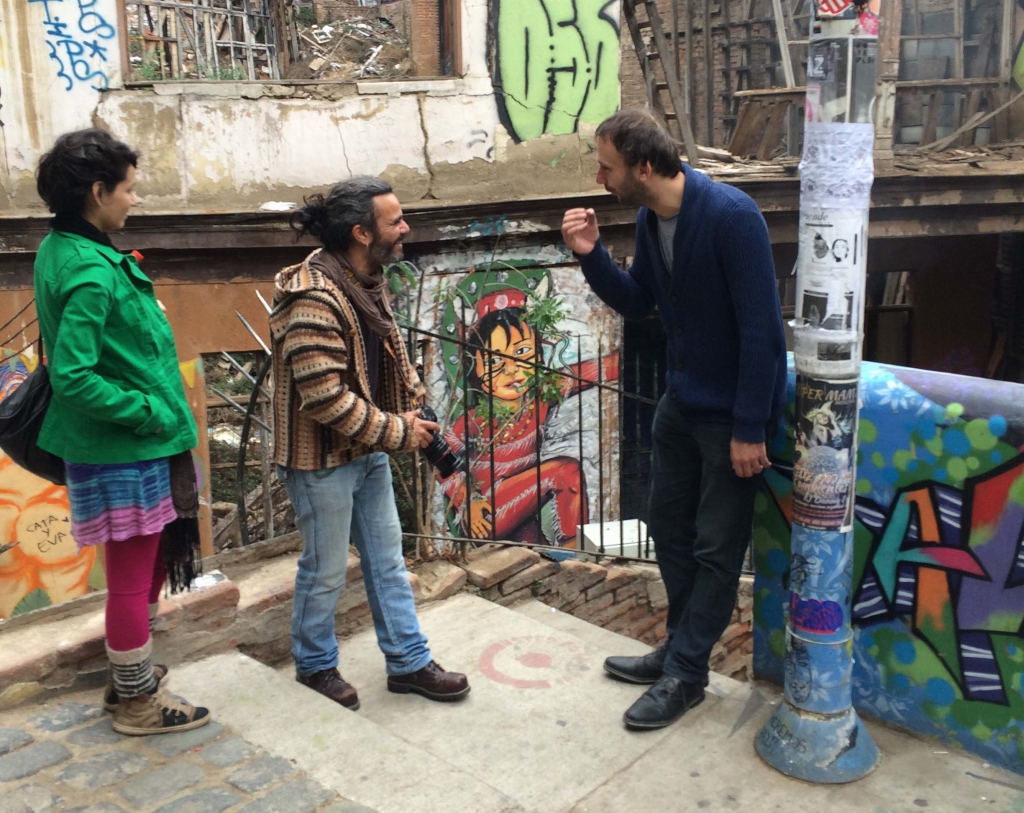
With the filmmakers Diego Marín Verdugo, Daniela More and the mathematician Nicolas Libedinsky in the streets of “Valpo”
In Chile you’ll know instantly if you’re going to be friends with someone you just met: If after just a few minutes the other person will be already starting to throw bad insults at you cheerfully, then that’s a clear sign that you’ll be friends. Fortunately enough, I really spent most of my time in Chile laughing.
https://vimeo.com/133295866
After 11 screenings in total, the final day of my stay in Chile has arrived. What a beautiful day. Thanks again to Diego Marín Verdugo for his beautiful and improvized stop motion video (music by Victor Jara).
Last but not least… many, many thanks go to the Instituto Multimedia DerHumAlc for inviting me over and for hosting for an entire week in Buenos Aires!
My warmest thanks go to the following institutions for their friendly support and for financing the plane tickets, herewith making possible this adventure: Alianza Francesa de Buenos Aires, Ambassade de France en Argentine, Heinrich Böll Stiftung Cono Sur.
